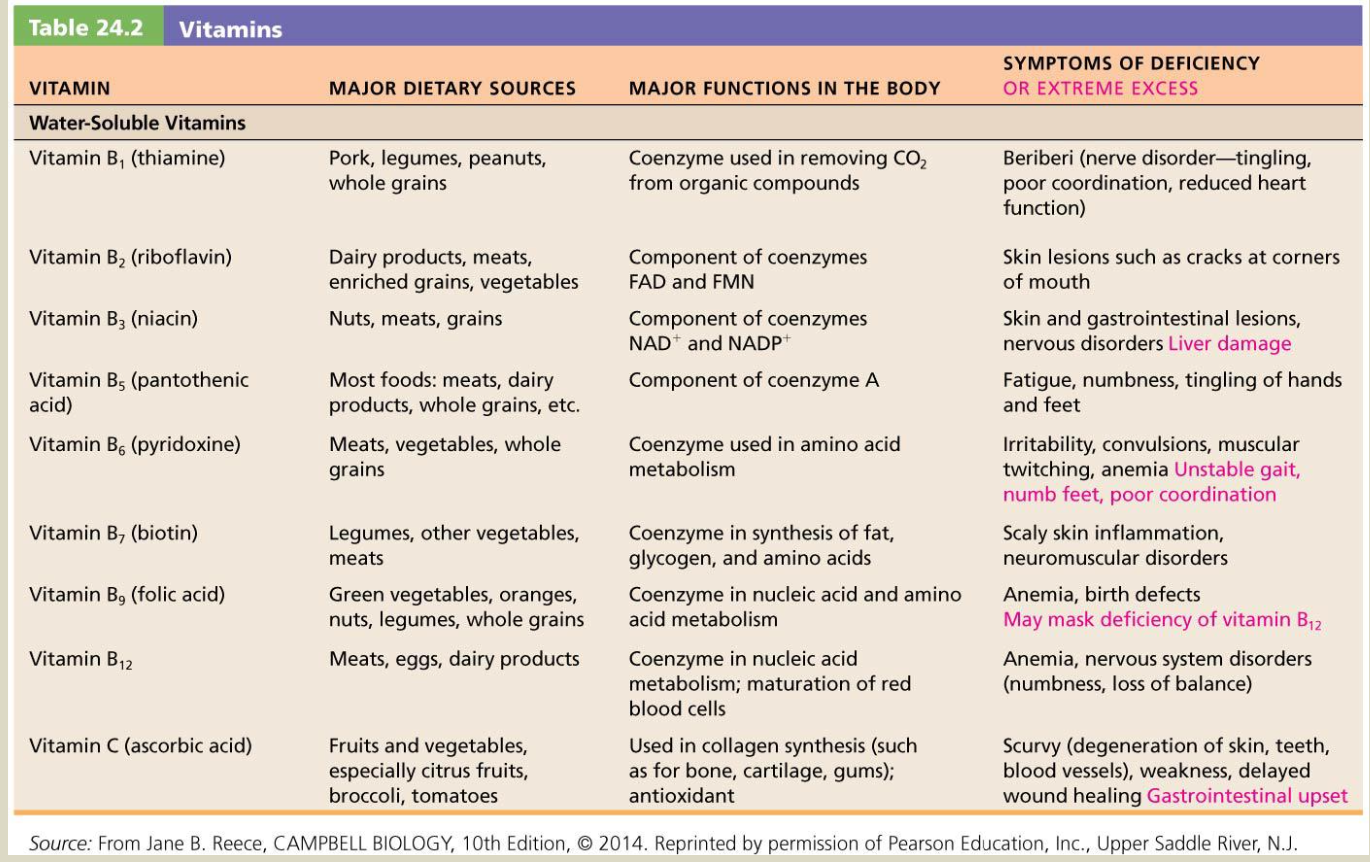Clinical Biochemistry: Nutrition
1/22
Earn XP
Description and Tags
Flashcards based on key concepts from the Clinical Biochemistry of Nutrition lecture notes.
Name | Mastery | Learn | Test | Matching | Spaced |
|---|
No study sessions yet.
23 Terms
Nutrient
A substance in food the body uses to promote normal growth, maintenance, and repair.
Macronutrients
Nutrients required in larger amounts, including carbohydrates, lipids, and proteins.
Micronutrients
Nutrients needed in small amounts, including vitamins and minerals.
Balanced Diet
A diet that guarantees adequate amounts of all necessary nutrients and energy.
Energy (kcal)
A measure of the energy value of food, where 1 kilocalorie is the amount of energy needed to raise the temperature of 1 kg of water by 1°C.
Carbohydrates
Nutrients that provide energy, mostly sourced from sugars and starch.
Protein
Nutrient that plays a key structural and functional role in the body, providing amino acids.
Vitamins
Organic compounds essential for normal growth and nutrition, usually required in small quantities.
Fiber
Dietary components that are not hydrolyzed by digestive enzymes and promote digestive health.
Assessment of Nutritional Status
Evaluating whether individual patients' nutritional needs are being met, to identify risks and monitor progress.
Anthropometry
The science of measuring the human body to assess nutritional status.
Biochemical tests
Laboratory assessments used to evaluate nutritional status, including measurements of blood protein, glucose, and lipids.
What are the three categories of nutirent
macronutrients, micronutrients, and water.
What is an essential nutrient
cannot be made by the body and must, therefore, be consumed from food has a particular function in the human body (e.g. vitamins and some proteins).
What is the purpose of energy in the body
Body uses energy in the maintenance of metabolic processes, physical activity and growth.
Resting individual → energy-requiring processes include active pumping of ions across cell membranes, thermoregulation, cell division and basal function.
Thus energy requirement of individual varies with body size and composition, sex, age, nutritional status and climate.
What is the importance of essential fatty acids
important components of phospholipids; help to maintain cellular function and subcellular membranes
→ Regulation of cholesterol
→ Synthesis of prostaglandins, thromboxanes and leukotrienes
→ Deficiency in diet → dermatitis, alopecia and fatty liver
What can a deficiency of micronutrients lead to
Vitamins and certain trace elements are essential components of the diet required in very small amounts
➢ Deficiency of individual micronutrients classically results in typical symptoms and signs according to the vitamin or trace element involved
such as scurvy from vitamin C deficiency
and rickets due to vitamin D deficiency.
Chronic deficiencies can lead to more severe health issues, impairing overall health and bodily functions.

What is the importance of fibre and what can deficiency lead to
Fibre is crucial for digestive health, helping to regulate bowel movements and prevent constipation.
A low dietary fibre intake → constipation, diverticular disease, appendicitis, gallbladder disease and carcinoma of the large bowel
What are the 4 main apporaches to assessing nutrintanl status
• Anthropometry
• Biomarkers
• Clinical assessment
• Dietary assessment
Why is clinical assessment used for nutritional status
Evidence of nutritional disorders may become apparent during history taking and physical examination.
➢ Past medical history → changes patient’s usual weight, poor wound healing or increase susceptibility of infection.
➢ Any difficulties in chewing or swallowing, symptoms such as anorexia, nausea, vomiting or altered bowel habit.
➢ Chronic use of alcohol or drugs & socioeconomic factors.
➢ Physical examination → generalised nutritional depletion
(muscle wasting, oedema).
Why is dietary assessment used for nutritional status
Dietary assessment involves → intake of food and individual dietary components, and comparing the amount consumed with reference values → deficiency or excess.
➢ Methods of dietary assessment:
▪ record current intake → all food is weighed or measured prior to being eaten.
▪ dietary recall methods → 24 h or 7-day period → can reveal major areas of deficiency, or excess
Why is Anthropometric Measurements used for nutritional status
➢ Anthropometry → measurements of the human body
o Height and weight
o Body mass index (BMI; kg/m2) → used to grade the severity of obesity or of chronic energy deficiency
o Circumference measurements: waist:hip ratio, reflects the distribution of fat rather than the degree of obesity.
What are the lab assessments for nutrition
Biochemical tests used to complement history: none are completely satisfactory
✓ Protein → serum albumin, indicator of protein nutritional status, however related to many factors such as hepatic & renal diseases.
✓ Blood glucose → maintained even during prolonged starvation periods.
✓ Lipids → fasting plasma triglyceride levels provide some indication of fat metabolism; but affected by many metabolic processes.
✓ Faecal fat → assessment malabsorption.